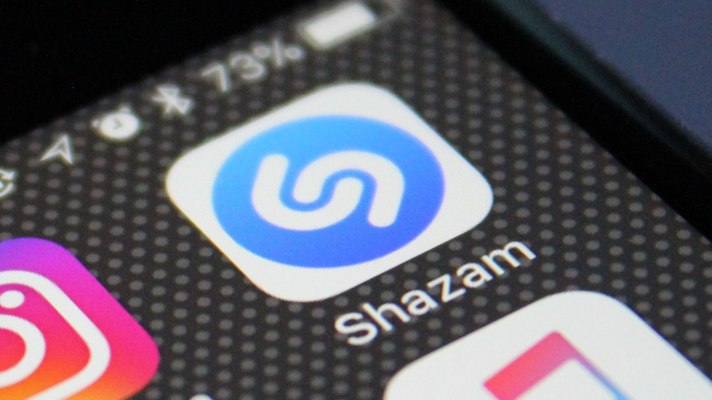Apple in 2018 closed its $400 million acquisition of music recognition app Shazam. Now, it’s bringing Shazam’s audio recognition capabilities to app developers in the form of the new ShazamKit. The new framework will allow app developers — including those on both Apple platforms and Android — to build apps that can identify music from Shazam’s huge database of songs, or even from their own custom catalog of pre-recorded audio.
Many consumers are already familiar with the mobile app Shazam, which lets you push a button to identify what song you’re hearing, and then take other actions — like viewing the lyrics, adding the song to a playlist, exploring music trends, and more. Having first launched in 2008, Shazam was already one of the oldest apps on the App Store when Apple snatched it up.
Now the company is putting Shazam to better use than being just a music identification utility. With the new ShazamKit, developers will now be able to leverage Shazam’s audio recognition capabilities to create their own app experiences.
There are three parts to the new framework: Shazam catalog recognition, which lets developers add song recognition to their apps; custom catalog recognition, which performs on-device matching against arbitrary audio; and library management.
Shazam catalog recognition is what you probably think of when you think of the Shazam experience today. The technology can recognize the song that’s playing in the environment and then fetch the song’s metadata, like the title and artist. The ShazamKit API will also be able to return other metadata like genre or album art, for example. And it can identify where in the audio the match occurred.

When matching music, Shazam doesn’t actually match the audio itself, to be clear. Instead, it creates a lossy representation of it, called a signature, and matches against that. This method greatly reduces the amount of data that needs to be sent over the network. Signatures also cannot be used to reconstruct the original audio, which protects user privacy.
The Shazam catalog comprises millions of songs and is hosted in cloud and maintained by Apple. It’s regularly updated with new tracks as they become available.
When a customer uses a developer’s third-party app for music recognition via ShazamKit, they may want to save the song in their Shazam library. This is found in the Shazam app, if the user has it installed, or it can be accessed by long pressing on the music recognition Control Center module. The library is also synced across devices.
Apple suggests that apps make their users aware that recognized songs will be saved to this library, as there’s no special permission required to write to the library.

Image Credits: Apple
ShazamKit’s custom catalog recognition feature, meanwhile, could be used to create synced activities or other second-screen experiences in apps by recognizing the developer’s audio, not that from the Shazam music catalog.
This could allow for educational apps where students follow along with a video lesson, where some portion of the lesson’s audio could prompt an activity to begin in the student’s companion app. It could also be used to enable mobile shopping experiences that popped up as you watched a favorite TV show.
ShazamKit is current in beta on iOS 15.0+, macOS 12.0+, Mac Catalyst 15.0+, tvOS 15.0+, and watchOS 8.0+. On Android, ShazamKit comes in the form of an Android Archive (AAR) file and supports music and custom audio, as well.

